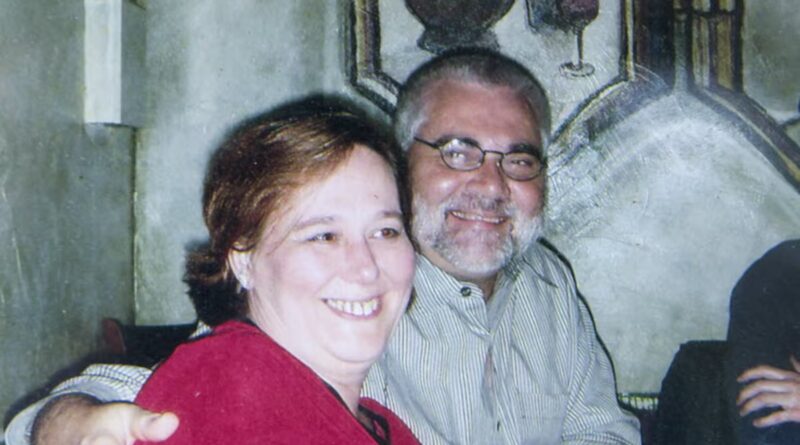12-Year Old Holly Popovich Recruits 13-Year Old Boyfriend to Murder Her Parents in Garland Texas
The killings of Darlene and Alan Nevil in Garland, Texas, remain one of the most unsettling juvenile-perpetrated crimes in recent North Texas memory. At the center was a 12-year-old girl, Holly Popovich, and her 13-year-old boyfriend. What unfolded on August 17, 2010, was not a spontaneous outburst but the culmination of escalating defiance, adolescent infatuation, and a dangerous fantasy of freedom from parental authority. Darlene died the day of the attack; Alan, gravely wounded, fought for his life before succumbing weeks later. Their story raises painful questions about juvenile culpability, the limits of the family safety net, and the boundaries of rehabilitation when a child directs lethal violence against those charged with her care.
The Family and the Setting
Darlene Nevil was known among friends and neighbors as protective and determined—a mother navigating the turbulence that can accompany the pre-teen and early teen years. Her husband, Alan, was described as steady and supportive, a partner invested in creating structure at home. The Nevils lived in Garland, a diverse suburb northeast of Dallas where tidy residential streets, neighborhood schools, and community parks make the violence that occurred all the more jarring in retrospect.
The household was not immune to conflict. Like many families with an adolescent testing limits, there were rules about friends, phones, and where and when a child could go out. Within that ordinary friction, however, a volatile dynamic brewed: a young teenager exploring identity and independence, and a new romantic relationship that quickly became the emotional axis around which plans and priorities turned.
A Relationship That Escalated Too Fast
Holly and her boyfriend bonded with the intensity common to early teenage relationships, but their connection sped past ordinary boundaries. Text messages, secretive planning, and a shared sense of grievance about parental restrictions created a feedback loop. Instead of moderating one another’s impulses, they amplified them. “We’re in this together” hardened from a teenage motto into a worldview that cast parents as obstacles.
This emotional escalation carried a practical dimension: the belief that rules at home were not merely inconvenient but intolerable, and that the only path to autonomy was to remove those rules at their source. For two children, each lacking the maturity to appreciate permanence and consequence, fantasy began to masquerade as a plan.
The Day of the Crime
On August 17, 2010, the pair acted on their plan inside the Nevils’ home. What happened was quick and catastrophic. Darlene was killed that day. Alan was critically wounded; first responders and medical teams fought to stabilize him, and for a time his survival offered a glimmer of hope that the damage might not be total. Yet the injuries were too severe. He died later from complications, turning the incident into a double homicide that would reverberate through the extended family and community.
Those who knew the Nevils recalled the normalcy of that day in the neighborhood—the heat, the routine comings and goings—sharply contrasted by the emergency response that followed. In minutes, an ordinary Tuesday turned into a crime scene bordered by tape and marked by evidence flags, the threshold of a home transformed into a boundary between before and after.
The Investigation and the Break in the Case
Garland detectives confronted a puzzle that moved rapidly toward a chilling resolution. There was no sign of a stranger-on-stranger assault, no forced entry, and no evidence suggesting a random robbery gone wrong. The investigative focus narrowed almost immediately to the domestic sphere.
Digital communications, interviews with classmates, and timelines assembled from phone records and witness statements quickly clarified the central roles. The portrait that emerged was startling in both planning and participation: a 12-year-old who, according to investigators, directed or orchestrated the attack, and a 13-year-old boyfriend who carried it out. The “how” became clear; the more haunting question, “why,” had answers that felt far too small to stand in proportion to the loss.
Juvenile Defendants in an Adult World
When children are accused of capital crimes, the legal system must reconcile two competing truths: juveniles are developmentally different from adults, yet their actions can cause adult-sized devastation. In Texas, that tension is addressed through determinate sentencing and the possibility of later transfer to the adult prison system if rehabilitation has not been achieved in the juvenile setting.
Both juveniles in the Nevil case were adjudicated for capital murder. The courtroom setting eschewed spectacle; the facts were grave enough. Prosecutors framed the events as intentional and planned, not an accident born of chaos. Defense counsel emphasized age, immaturity, and the distortions of an intense adolescent relationship. Judges considered not only punishment but the prospect—however faint—that years of structured intervention could redirect a life.
Sentencing and the Long Shadow of Consequences
Holly Popovich received a determinate sentence measured in years rather than the decades typical for adult capital convictions; her boyfriend received a longer term. These sentences reflected the legal framework for juvenile capital cases at the time, pairing accountability with the possibility—though not the guarantee—of eventual release. The system set markers: behavior in custody, participation in treatment, and evidence of genuine change would matter.
Years later, a judge evaluated whether continued custody in a juvenile facility was appropriate or whether transfer to an adult prison was necessary to protect the public and continue the sentence in a more secure, structured environment. The court’s decision to transfer Holly to the adult system underscored its conclusion that genuine rehabilitation had not been demonstrated to the court’s satisfaction. For the families of Darlene and Alan, the ruling affirmed gravity; for advocates of juvenile reform, it reignited debate about what rehabilitation can realistically achieve in the wake of lethal violence.
The Community Response
Neighbors left flowers and notes. Friends swapped stories that recentered Darlene and Alan as people—funny, stubborn, generous, imperfect—and not just names attached to a tragedy. Teachers and parents used the case as a painful touchstone for conversations about safe relationships, the lure of secrecy, and the importance of monitoring online communications without dissolving trust.
For Garland’s first responders and detectives, the case became part of institutional memory—a reminder that even in safe neighborhoods, the deadliest risks can be close to home. For clergy and counselors, it became a pastoral challenge: how to honor grief without slipping into sensationalism, how to comfort a community whose shock carried a frightening subtext—if this could happen there, could it happen anywhere?
Media, Myth, and the Search for Meaning
High-profile juvenile cases gather narratives the way a thunderstorm gathers static. Rumors circulate; social media invents motives that official investigations never confirm; internet commentators supply simplistic explanations on demand. The Nevil case, by virtue of the perpetrators’ ages, drew outsized attention and too many hot takes. Over the years, the story has been retold with layers of speculation that obscure rather than clarify.
Stripping away myth leaves a more sobering picture: a troubled adolescent relationship, an escalating defiance of household rules, and a catastrophic decision with irreversible consequences. There is no romantic outlawry here, no grand ideological motive—only the terrible mismatch between juvenile impulsivity and adult-level lethality.
What This Case Teaches About Juvenile Violence
Three lessons emerge with uncomfortable clarity:
First, development matters. The adolescent brain, especially the circuits governing impulse control and future-oriented thinking, is not yet mature. That fact does not absolve responsibility, but it cautions against assuming adult capacities where they do not exist. When lethal means are added to adolescent volatility, the margin for tragedy collapses.
Second, relationships amplify risk. Teen partnerships can be stabilizing when grounded in healthy boundaries and adult guidance—or destabilizing when they become echo chambers of grievance. Early warning signs include secretive planning, rehearsed defiance of parents or guardians, and the erosion of outside friendships or extracurricular anchors.
Third, systems must be vigilant and humble. Schools, youth programs, churches, and clinics can surface troubling patterns, but even strong systems cannot foresee every risk. After tragedies, institutions tend to overcorrect. The better response is sustained attentiveness: training adults to recognize cues, providing adolescents with confidential counseling pathways, and building community bridges that reduce family isolation.
Remembering Darlene and Alan
Amid legal analysis and policy debates, two lives anchor the story. Darlene Nevil was a mother, spouse, friend, and colleague whose everyday acts of care mattered to people who still miss her. Alan Nevil was a husband, neighbor, and worker whose steadiness helped keep a household—and a marriage—going. Their absence has left concentric circles of grief, from family to friends to a neighborhood that will never wholly regain the ease it felt before August 2010.
The best memorial resists both voyeurism and erasure. It is frank about what happened and what was lost, and it insists on naming the victims as more than victims: people with humor, habits, ambitions, and faults, whose lives were cut short by choices they did not make.
Aftermath and the Long View
Years have passed, and the criminal sentences continue to run their course. For the surviving relatives, “closure” is an inadequate and often unhelpful word. What exists instead is adaptation: learning to carry grief without letting it eclipse every conversation; finding forms of remembrance that honor Darlene and Alan without reopening the wound anew each day.
For the broader public, the case endures as a cautionary tale about adolescent risk and the responsibilities that come with power—legal, parental, and communal. It reminds us that safety is not merely the absence of danger but the presence of healthy bonds, supportive institutions, and early interventions that can absorb adolescent turbulence before it hardens into tragedy.
Discover more from City Towner
Subscribe to get the latest posts sent to your email.




